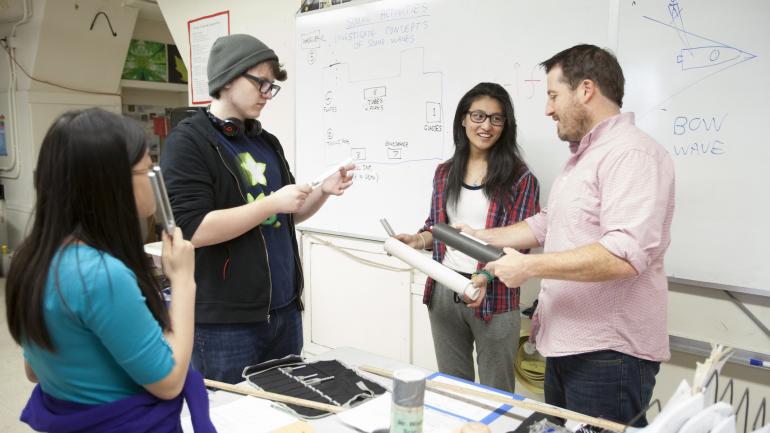
In business and at every level of government we are constantly hearing about the critical need to further emphasize STEM in our schools. Media headlines also remind us that our nation's competitiveness depends on more young people pursuing STEM fields after college. So, what is STEM, and why is it so important?
STEM stands for Science, Technology, Engineering and Math. According to many, these interrelated fields increasingly drive innovation, job creation, and our overall economy. Gateway is committed to STEM opportunities for students both as part of our academic program, as well as through mentoring for aspiring, underserved students in STEM and entrepreneurial leadership. Both schools seek to prepare students for greater success in these fields, ready for the 21st century job market.
Gateway Middle School teacher, Therese Arsenault, described our commitment to STEM in the following way, "STEM is important because it shows students that science is at the intersection of different worlds. It's at the intersection of math. It's at the intersection of engineering. It's at the intersection of art. It's at the interaction of language. It's at the intersection of social studies. It weaves everything together."
At Gateway Middle School, the goal of the science curriculum is to ignite the wonder of science and stimulate curiosity among students. "Our goal is to help our students understand the science behind everyday occurrences so they feel empowered," said Ms. Arsenault. "We want to help them understand basic questions like 'why does my cell phone signal go out when I go behind a hill?' or 'why do I fly forward when the car stops?'"
Science education at the Middle School is project-based and very much hands on. Students are also taught about modeling, something that scientists, engineers, and mathematicians do all the time. Students created an earth model earlier this year to illustrate how the mechanical layers of the earth move. Through modeling, they represented the difference between the inner and outer core.
"The important thing about modeling is that it's used to explain a phenomena you cannot see," said Ms. Arsenault. In one demo, students were presented with a mystery box and had to model what they believed to be happening in the box.
Between environmental science, biology, chemistry, physics, and AP offerings, our Gateway High School students have the option of doing six years of science during their time in High School.
"At Gateway we focus on really interesting, fun, and hands on science that get kids engaged about real-world scientific phenomena," explained Tim Woolgar, Gateway High School physics teachers. "We want our students to understand the world around them – after all, that's what science is all about."
Mr. Woolgar is dedicated to helping students understand how physics is as an everyday part of our world. "I love it when kids come in after a concert and tell me how they felt the pressure of the sound waves or when a movie like Intersteller comes out and everyone asks about gravity. It's really exciting to me when kids make these types of connections and are engaged," said Mr. Woolgar.
"In order to hook kids who aren't necessarily passionate about science, you have to make it real and connect it to the real world," explained Mr. Woolgar.
One of the most popular labs in physics is the soda bottle rocket launch. Students work together in teams to build a soda bottle rocket, which gets launched about 200 feet in the air. Each rocket contains a raw egg passenger that needs to get back to the ground safely through the laws of motion.
"The most enjoyable thing about physics is seeing students get excited over science and actually having fun doing it," explained Mr. Woolgar. "It's awesome to be part of their "aha" moments when they connect the science with real-world experiences."
"The ultimate goal of our science curriculum at Gateway is to get students to think critically and make real-world connections," said Ms. Arsenault. "If we grow a nation of people who just memorize and recall, we're doing our nation and the future generation a disservice. What is going to solve the problems of the world lies within our curiosity, wonder, and the intersection of disciplines."
Creating a learning environment in which exploration, discovery and excellence go hand in hand remains a hallmark of a Gateway education.